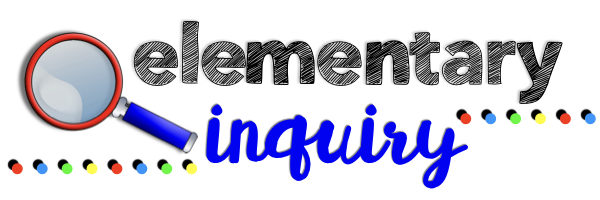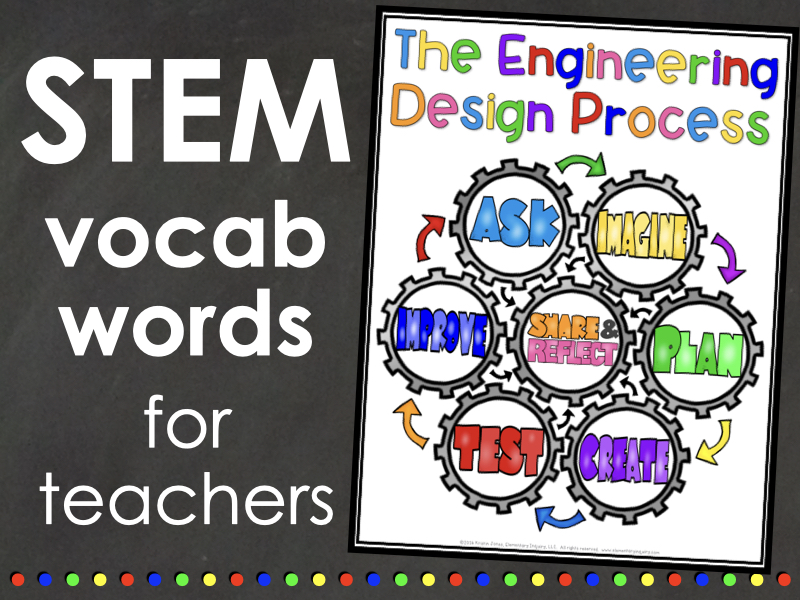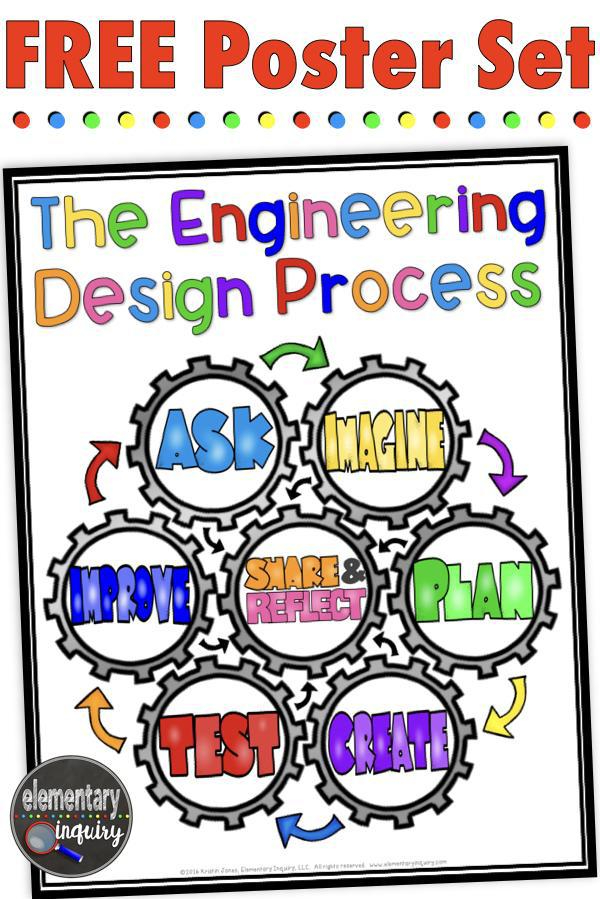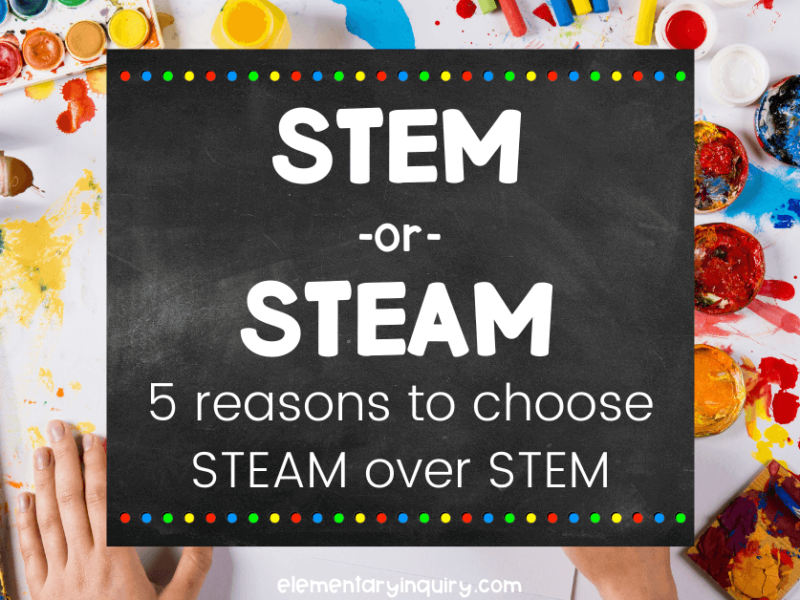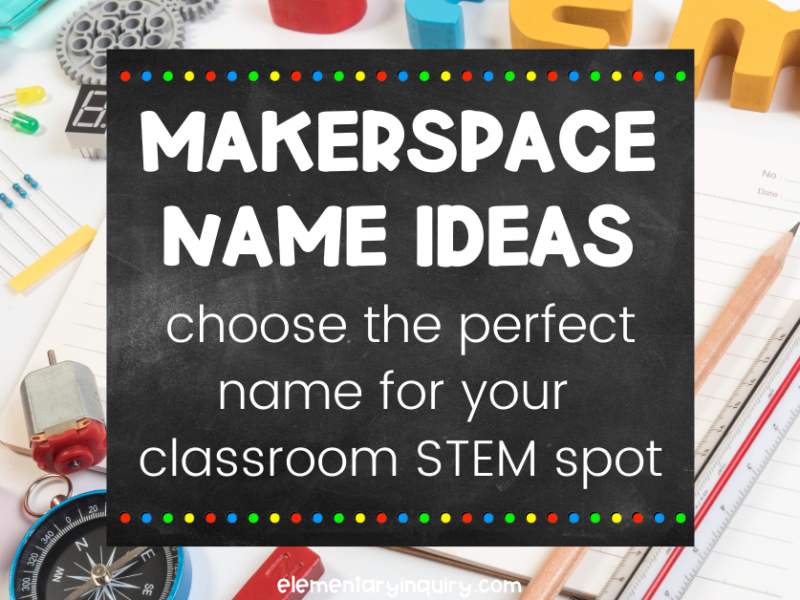Just like any educational approach, there are lots of STEM words, phrases, and acronyms related to elementary engineering. What’s the difference between STEM and STEAM (or even STREAM)? Terms like inquiry-based learning or project-based learning and the 4 Cs pop up often in conjunction with STEM education. Then there are specific engineering words like makerspace and prototype. As I’ve learned more about elementary STEM education, I’ve developed a better understanding of the nuances of many of these terms. I thought it might be helpful to share this list of STEM vocabulary words for teachers! I’m also sharing a FREE Engineering Design Process poster set that will help you use many of these STEM words during your elementary engineering activities.
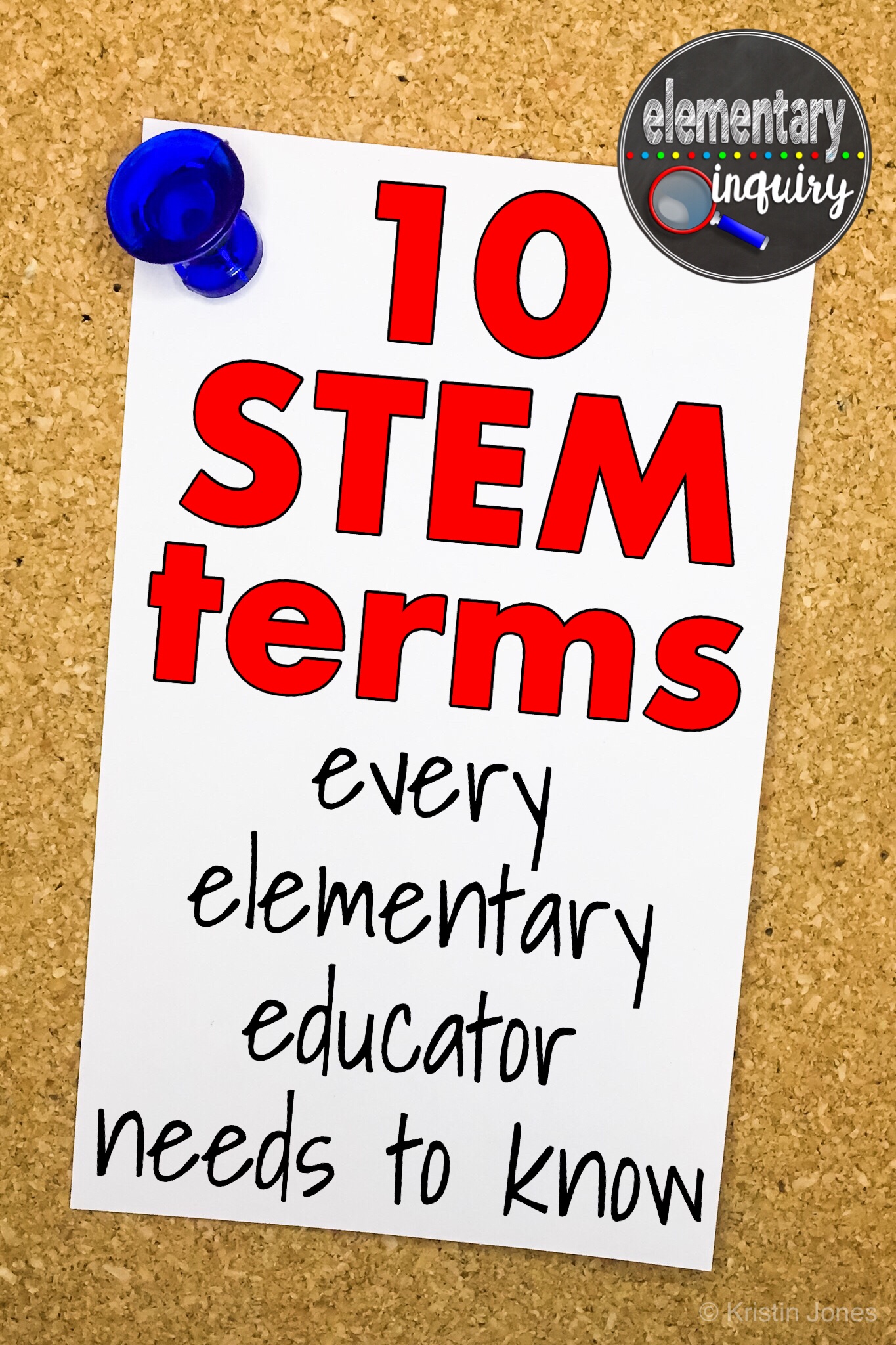
- STEM and STEAM: STEM is an acronym that stands for four content areas and skill sets that are in high demand in the 21st Century: Science, Technology, Engineering, and Math. STEM education programs emphasize the connections among these fields. A biology lesson in which the teacher assigns a textbook chapter and questions about animals’ physical adaptations is just a science lesson; a STEM project might require students to research physical adaptations and build a prototype of a prosthetic limb for an animal in captivity. The acronym STEAM includes the Arts in addition to the four STEM fields described above. Incorporating the Arts into core content areas allows students to process and apply information across multiple modalities and senses, which increases understanding and retention. (Some schools have STREAM programs, where the R stands for “reading.”) If you’re already incorporating STEM or STEAM activities into your regular curriculum, take in a step further by using STEM student portfolios as a form of assessment.
- Engineer: Google’s dictionary defines the verb form of engineer as “to design and build (a machine or structure),” so an engineer is anyone who designs and builds machines or structures. Let’s apply this definition broadly enough to recognize that all of us – especially teachers – engineer solutions to small problems everyday. You’ll find any number of ingenious classroom design hacks with a quick scroll through the instagram teacher community. Our students are also engineers. One year, I had a student who could make anything out of paper clips and index cards! I think regularly using the word engineer – in both noun and verb form – to refer to our students and their work is really empowering and makes the Engineering part of STEM far more accessible and far less intimidating. This “I am an Engineer” poster set is one tool for reinforcing the idea that many different people, including your students, are engineers!
- The Engineering Design Process: The engineering design process is the cycle of steps engineers engage in when creating a solution to a problem. I purposefully didn’t write that engineers “follow” these steps, because they are not rigid. If you google the engineering design process, you’ll find many variations on the same ideas: First, engineers (or their clients) ask a question or identify a problem. Then, they brainstorm and plan possible solutions before creating an initial product, prototype, or model. Next, engineers test and improve the product. These steps can be very fluid. Some parts of the process can take longer than others or can vary greatly between different projects. Sometimes, ideas or tests can lead to new questions, or a product may need to go through several iterations before it is an acceptable solution. I designed this poster of the Engineering Design Process to try to emphasize that all of these steps fit together and work best when we continually share and reflect on our work. You can display this poster in your classroom, or make a copy for each student, and refer to it as you use many of these STEM words in class discussions. Get a free copy of this poster sent directly to your email!
- Model and …
- Prototype: I often hear these two STEM words used interchangeably to describe the products created using the engineering design process, but they do have different meanings. A model is a representation of a concept that isn’t to scale or doesn’t fully function. A prototype is a basic, functioning version of a product, often made with cheap, readily available materials that are easy to work with. In an elementary STEM classroom, students might create models of the solar system or of a futuristic city. They could make prototypes of a new musical instrument or of a unique paper airplane design.
- Technology: When educators talk about technology in the classroom, we are often referring to student access to laptops or tablets, online learning opportunities, or the latest educational apps. But it’s important to consider a much simpler definition of technology: any tool designed to make a task easier, quicker, or simpler — that is, just about any product of engineering! You can look at some basic, everyday pieces of technology, like pencils or scissors and consider how design variations make necessary tasks easier. When I shared this idea with my students, it helped them view themselves as “real” engineers, no matter how simple or complex their projects were.
- Makerspace: Quite simply, a makerspace is any area that provides students with tools, materials, and space to make things. A makerspace can be a dedicated room, a corner or a table in your classroom, or even a mobile cart or individual boxes containing basic supplies. Some other names for spaces like this include an Engineering Lab, an Innovation Station, and – my favorite so far – a ColLaboratory. I’d love to hear if you use a different name for your makerspace!
- Project Based Learning: This is an approach to teaching and learning that enables students to apply and gain knowledge and skills while making connections to complex, real world challenges. Teachers and/or students pose an open-ended question that guides classroom activities. Students usually collaborate to create an authentic product in response to the guiding question and publicly (within the school or broader community) share their work. While project-based learning isn’t inherently part of an elementary STEM program, they do incorporate many of the same process ideas and opportunities for content integration. Here’s a fantastic article about the relationship between PBL and STEAM from Education Closet.
- Inquiry Based Learning: I received training in inquiry-based learning before my school developed its STEAM program, but this approach is another natural fit with STEM education. Basically, every lesson or unit begins with a focus question (again, either teacher or student created), and the learning activities are designed for students to discover new concepts and build understanding through experience. One of the most valuable aspects of inquiry-based learning for my students is the idea of introducing key vocabulary after the students have engaged in the learning experience. At the end of the lesson or unit, students respond to the focus question using key vocabulary and concepts, providing an opportunity for formative assessment. Many science concepts are an obvious choice for using inquiry-based learning opportunities, but this approach can work in any content area. You can use a printable KWL chart (with a special twist!) to help generate inquiry ideas for any unit.
- The 4 C’s: Communication, collaboration, critical thinking, and creativity. We expect the adults we interact with, professionally and personally, to have these 21st century skills, so we must give students more chances to work together to engineer solutions to authentic problems relating to the curriculum. Regularly incorporating STEM activities into your classroom is a fantastic way to do this!
Whether you’re thinking about starting STEM program or already incorporate engineering activities in your classroom, I hope this list of STEM vocabulary words helps clarify some of the terminology relating to elementary engineering. Are there any other STEM words or phrases that I should add to this list? Please leave a comment below!
Remember to snag this free Engineering Design Process poster to use with your students!
